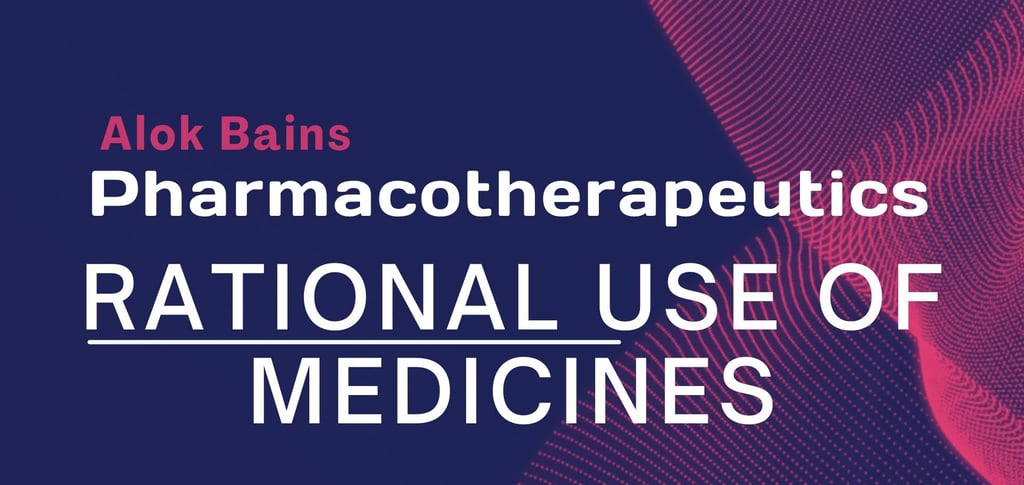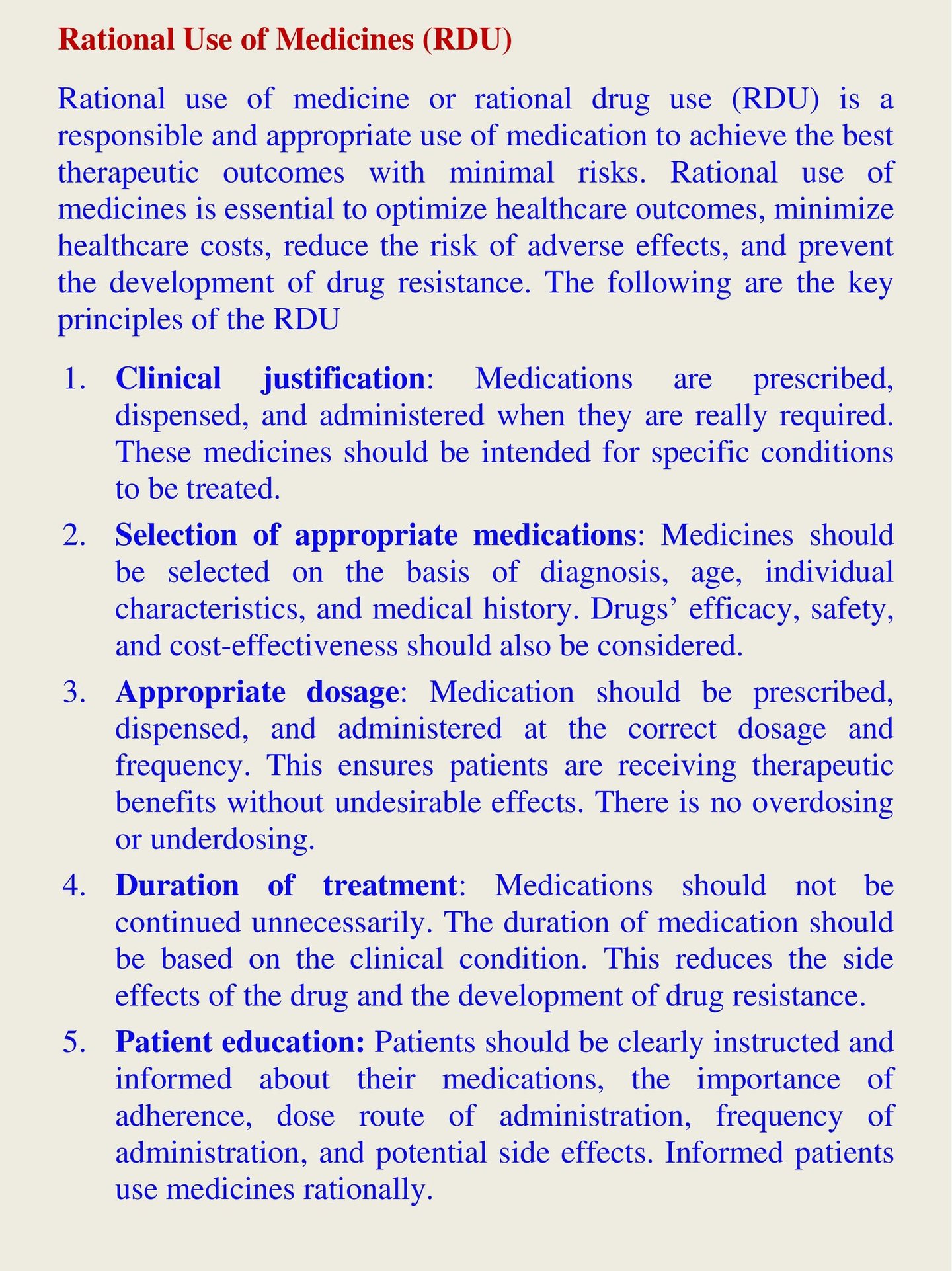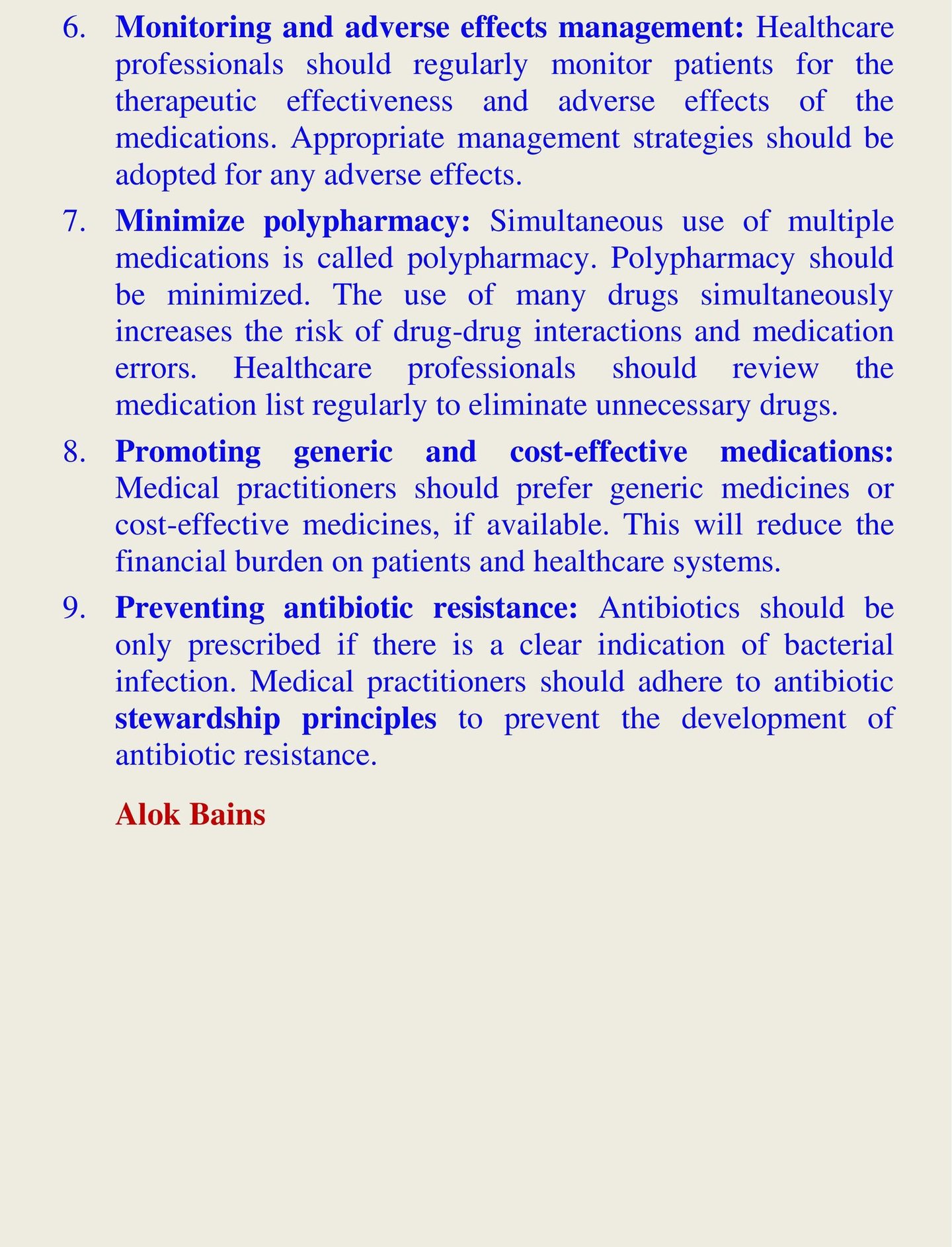Rational Use of Medicines
Rational Use of Medicines and Evidence-Based Medicines.
PHARMACOTHERAPEUTICS
Alok Bains
10/13/20232 min read
Evidence-based medicines (EBM)
EVM is a systemic and structured approach to medical decision-making. It ensures healthcare system adopts a treatment plan based on solid evidence from scientific research, clinical expertise, and patient values. It improves the quality of patient care. The following are key components of evidence-based medicines:
1. Research evidence: EBM relies on high-quality research studies such as randomized clinical trials, systematic reviews, and meta-analysis These studies help to provide the foundation for clinical decision-making. These studies also help to determine the effectiveness and safety of medical intervention (involvement).
2. Clinical expertise: Clinical expertise includes the knowledge, skill, and experience of medical practitioners, pharmacists, and nurses. EBM encourages healthcare providers to use their expertise with research evidence while making clinical decisions.
3. Patient values and preferences: EBM recognizes the importance of the values, preferences, and circumstances of individual patients. It encourages the shared decision-making between healthcare provider and patient. It helps to consider patients' unique needs and concerns.
4. Critical appraisals: EBM involves critical appraisal and evaluation of the quality of available evidence. This process helps healthcare professionals determine the validity, reliability, and relevance of research findings to a specific clinical situation.
5. Application of evidence: EBM guides the application of research evidence to clinical practice. Healthcare professionals use the best available evidence in treatment decisions and diagnostic strategies
6. Patient-centered: EBM is patient-centered. It focuses on individual patient needs and preferences.
7. Safety and efficacy: EBM prioritizes the treatment that is safe and effective through scientific evaluation. It avoids harmful or ineffective practices.
8. Cost-effectiveness: EBM prefers cost-effective treatment options.
9. Regular updates: EBM guidelines and recommendations are periodically reviewed and updated. This ensures healthcare providers access to the latest evidence-based information.






